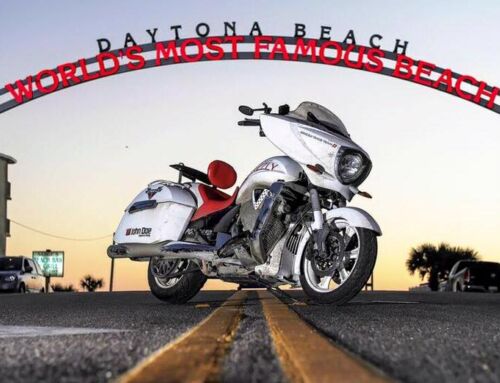William W. Hurst, Indianapolis Motorcycle Accident Lawyer
Motorcycle accidents are always serious and generally involve an increased risk of death and serious injury. The operator of a “bike” is much more “at risk” than the operator of 4-wheel vehicles. Motorcycle accidents average 
It is documented by recent statistics that motorcycle riders are 30 times more likely than a passenger car occupant to die in a motor vehicle traffic crash, and 5 times more likely to be injured while riding a motorcycle than in a car crash.
Tragically 42% of motorcycle riders who died in a single vehicle crash in the United States in 2011 had illegal blood alcohol levels. Almost 1 in 3 fatal motorcycle accidents are attributed to drinking and riding.
Helmets
There are several things that can be done to lessen the risk of injury while riding a bike. One, of course, is helmet use. Helmet use has been increasing slowly but steadily. NITSA estimates that helmets saved the lives of 1,823 motorists in 2008 which means that if everybody had worn helmets an addition 1,823 lives could have been saved. Unfortunately most states, including Indiana, do not have helmet laws. For more information on why it is important to wear your motorcycle helmet follow the link.
Elimination of Rider Inexperience
1 out of 4 riders involved in fatal crashes in 2008 according to NITSA were driving with invalid licenses at the time of the accident. There is no doubt that the more experienced the rider, the less likely it is that they will be involved in an accident. Both Skill of the motorcycle driver and his/her willingness to obey the laws affect the likelihood that they will 
Some states do have requirements and laws to mandate a rider education course and require special endorsements on driver’s licenses. Various states have programs to increase motorist awareness of motorcycles and increase helmet use through education.
It has been recommended that all states should require motorcycle operator training for minors, novice and re-entry riders by qualified instructors. GHSA urges states to support the use of DOT-certified helmets by motorcycle riders of all ages and oppose efforts to repeal or even reverse their helmet laws and adopt motorcycle helmet laws for all riders. All states should require motorcyclists to obtain a motorcycle operator license endorsement before they ride on a public highway.
Avoid Drinking and Riding
The statistics show us that a huge percentage of all fatal accidents involving motorcycle riders involve alcohol as mentioned above. Not only does drinking impair your motor skills and reaction time, it also tends to make you take risks you would not otherwise take. Because of this, drunk riders are much more accident prone. DON’T DRINK AND DRIVE.
Speeding
While most bike riders will tell you that everyone thinks they’re speeding when they’re not, NITSA’s statistics claim that in 2008 35% of all motorcycle riders involved in fatal crashes were speeding compared to 23% for passenger car drivers.
Wear the Right Gear to Reduce Injuries
Riders wearing jeans, T-shirts and sandals are recipes for disaster. You want to wear gear that will protect you from windchill, flying bugs, debris and road rash should you “slide out”. Go for a leather or reinforced jacket, gloves, full pants and over-the-ankle footwear.
Always Ride Defensively
You need to be extra alert particularly watching for cars suddenly changing lanes and pulling out of side streets. Never tailgate! The majority of automobile drivers striking motorcycles claim they never saw the motorcycle until impact. Wear clothes that render you more visible and stay vigilant.




